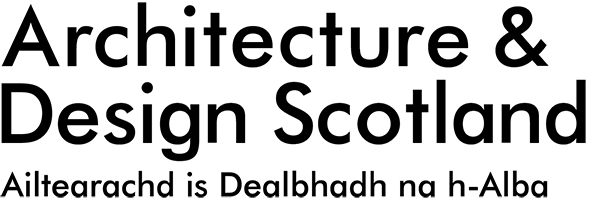The Gathering: bringing together the Climate Action Towns

(May 2023) Architecture and Design Scotland brought together the voices from the nine Climate Action Towns to share learning and experiences on community-led climate action. This blog is a summary of the day.
Those involved in Climate Action Towns from across Scotland came together at “The Gathering” event in Stirling to connect, reflect and share stories of climate action in their area.
It was a chance to take stock of the progress that has been made, to get inspiration from other places and projects, and consider next steps on our collective climate action journey.
The event also provided an opportunity for our team to share a new Climate Action Town's film that shared stories from all the towns, providing a flavour of the rich and varied work that is taking place.
The film viewing was followed by a choice of learning sessions on a range of topics. These were:
- Building Stronger Communities: Negotiating with Confidence presented by Laura McDonald from the Scottish Community Development Centre (SCDC), who we have partnered with in a number of town projects
- The Circular Economy and Ideas for Your Place discussed by Cheryl Robb from Zero Waste Scotland (Read a previous blog on the topic here)
- Emilie Wadsworth from Green Action Trust who talked about Greenspace and Biodiversity Ideas and Inspiration
- The Community Climate Adaptation Routemap: A Practical guide for communities to adapt to climate change was presented by Alex Cameron-Smith from Sniffer, Adaptation Scotland.
The afternoon session began with a series of short workshops, focussing on the 8 Principles of a Carbon Conscious Place, taking examples from some of the projects and initiatives across the participating towns.
Below is a brief summary of each.
Alan Thomson from Annan Harbour Action Group outlined ambitious plans to bring transformational, social and economic benefit to the area. The group aim to attract significant investment towards the overarching ambition to re-establish the towns links with the harbour – the gateway to Annan. The project aims to do the following:
- to celebrate the natural and cultural sources that Annan has, and to make improvements to restore biodiversity, and bring leisure and commercial activity to the harbour. This includes transforming a crumbling Georgian building into an activity hub.
- the project seeks to address the key sustainable challenges of our time – dealing with the twin threat of climate change and biodiversity loss. It aims to be an exemplar of low carbon design. The group see themselves as pioneers – setting a pathway, particularly for other coastal communities.
- continue to work hard with planners and experts to combat issues such as flooding. With the data that has been collected, the aim is to do more work with the wider community and draw on any expertise they may have. The next phase is a citizen science programme particularly focused on young people.
- deal with the challenges head on, to work with them rather than against them. The goal is to pull out and identify other opportunities for resilience and turn threats into opportunities.
Michael Cusack from ACS Clothing in Holytown shared the story of the company's circular economy initiatives and how they utilise their B-Corp Certified status to improve their business model.
Key points that came out of the breakout session include:
- helping to prolong the garment's lifecycle and maximise its longevity by providing rental and renewal services
- considering new ways to reduce water usage by utilising rainwater for toilets and redirecting sprinkler systems
- incentivizing staff to use sustainable modes of transport by providing free lunches and exceptional office facilities such as showers
- leveraging reusable plastic boxes instead of cardboard boxes for deliveries
Eric Spence introduced Campbeltown as a town with a population of 6,500. Due to its location, it is reliant on one road, which is often impacted by weather or rockfalls. Previous industries included shipbuilding, coal mining and clothing manufacture. Whilst the population had been in decline, post-lockdown the population has been growing. The town needs to work together to be resilient.
The town’s previous action plan, included work in the harbour, shopfront schemes and renovations of the town hall and the cinema. By 2019 the community had achieved many of their plans and re-surveyed the populations to get their priorities for the coming five years. They received 850 responses, representing 13.5% of the population.
Using the priorities identified by the residents the action plan outlines desired actions across seven themes. It allows the community to prioritise work and investments to respond to the needs of the whole community. It can direct funding to the areas that are most important to the people living in Campbeltown. The plan is jointly owned by the organisations and individuals that help to put it together.
The session with Chiara Fingland, of Fife Council, focussed on how to achieve ‘A Place of Small Distances’, building on the ideas of living well locally, and locating services within town centres. Discussions took place around:
- the retrofit of disused buildings to ensure town centres don’t become abandoned, but can be turned into an asset
- incentives for people to open up shops, and help to set up businesses
- the need for examples of places where people have tried to adapt their place along the principles of ‘living well locally’
- the lack of services in some communities brings different priorities – in some areas the bus services are so poor people need to take taxis to buy shopping, or need multiple buses to get to hospital
- council budgets are so often siloed by departments. More joined up, holistic thinking can bring greater benefits
Laura Hainey and Mark Dowey of Architecture and Design Scotland Climate Action Towns hosted a workshop looking at systems barriers and enablers in community climate action work.
Participants were asked four questions around systems barriers in their place and the work they do in it. These were:
- what did you want to change in your place?
- what were the barriers to making this change?
- what are the enablers that supported you in making the change? Are there any?
- what improvements would make it easier to make this change?
Systems barriers are an emotive subject amongst participants. There were a number of stories of people struggling to engage in a process that is frequently not suitable for purpose. These include coming up against a highly bureaucratic system, local politics, individual agendas, lack of time resource, and funding gaps.
The workshop allowed participants to realise that some of their frustrations were not unique and helped to find commonality with others.
Some examples of systems barriers and enablers were:
- community capacity – this is seen as a barrier, as “more people needed to build a community council”, and a wider “group to take responsibility for the local area”
- an enabler in Holytown was a “shared sense of what we want – which is for the town to connect with each other”
- another barrier is Geographical Assets – “finding suitable spaces in the village”
- support and resource, and local and regional strategies and visions were described as barriers to action. When asked about what improvements would make it easier to make changes in communities, we heard “council action, engagement and site location. policy with a joined-up approach”
- “let people know what help is available” - councils could be better at letting people know what help is available. The barriers here being support and resources, and funding
This online workshop hosted by Danny McKendry of Architecture and Design Scotland focussed on a number of core themes of a Carbon Conscious Place. Across all themes, participants would like to see the following change in their locality:
- more climate resilience
- improved greenspace and transport
- stronger community capacity and local jobs
- services that are mindful to urban and rural realities
Barriers include:
- lack of awareness
- a knowledge gap
- current difficulties of businesses and services to thrive locally
- working in silos
- stronger connection needed with local authorities
It was felt that change could be enabled by:
- strong and positive community engagement
- a good relationship with the local authority
- strengthened community capacity and local partnerships
- long-term climate adaptations (e.g. flood protection, insulated homes and bespoke measures for local need)
- additional funding
- a one-stop shop for local communities to seek support
- small pilot projects on biodiversity and climate
The last session of the day was looking at inspiration from across Scotland, looking to learn from projects that have been delivered by community initiatives:
- Delivering Number 30, a presentation by Carolyn Powell of Huntly Development Trust
- The story of Midsteeple Quarter, Dumfries as told by Scott Mackay
- Emma Halliday of Greenspace Scotland talked about Why Parks and Greenspace should be at the Heart of a Climate Action Town
With thanks to all those who attended and participated in a wide-reaching and inspiring range of discussions. It is our hope and ambition that these conversations will continue and grow, as we continue in our work to deliver Climate Action in towns across Scotland.
Join the online conversation
Find us on facebook to join in on the conversation on what we can do collectively to address our changing climate


Unlocking Town Centre Living: insights from private sector engagement

The Recap: A weekly update from Architecture and Design Scotland

Value of Design campaign: how design can improve everyday spaces, buildings and places

Inspiring the Learning Locally project: lessons from Armadale

The Recap: A weekly update from Architecture and Design Scotland

